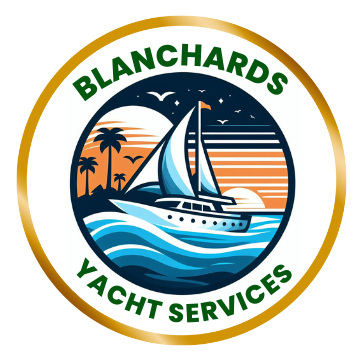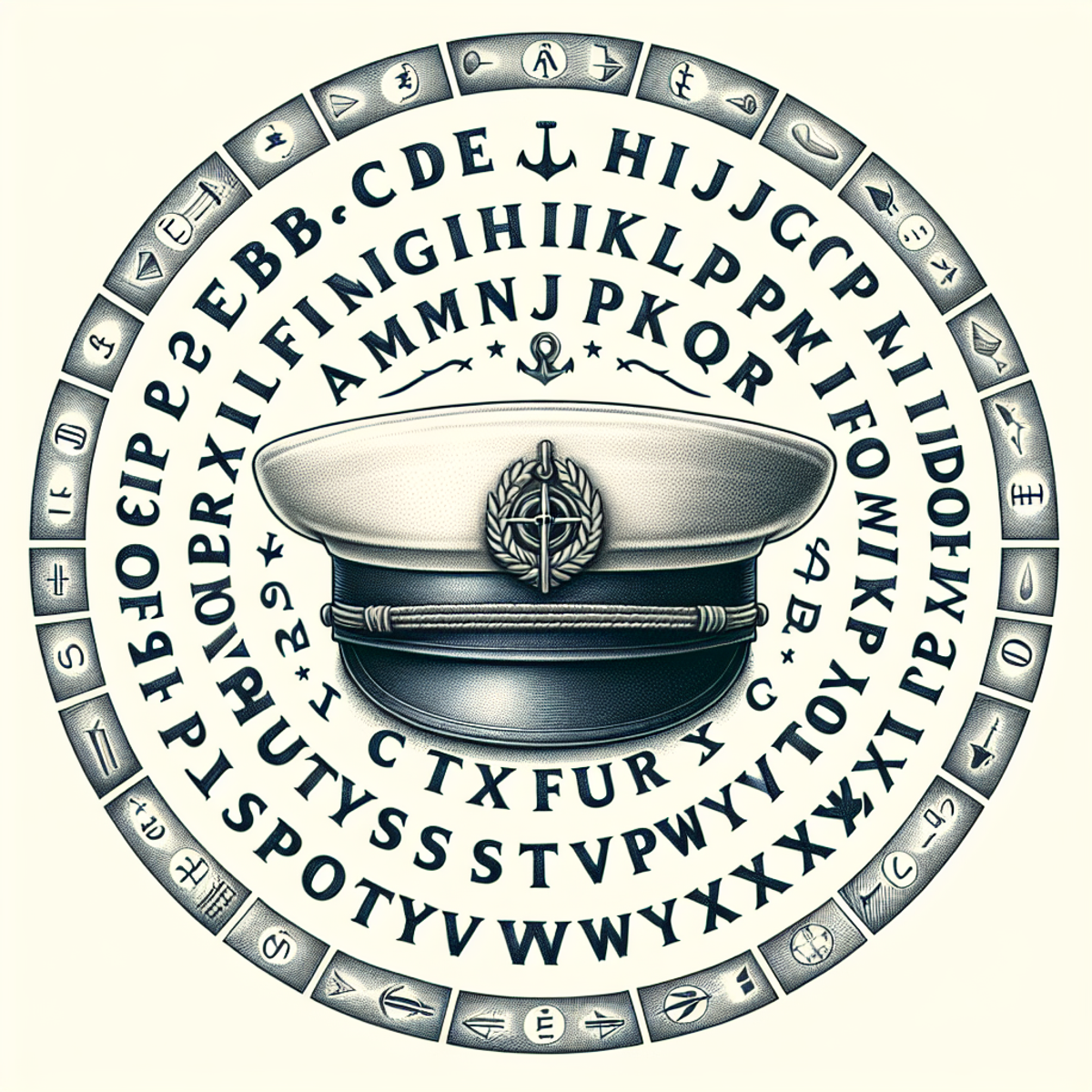Series: ”Did You Know”
Introduction
Yachting has its own distinct language, a set of unique terminology that ensures Effective Communication on Board. Understanding these nautical terms is crucial, whether you are a novice sailor or an experienced yacht enthusiast. The precision of yacht language minimizes misunderstandings and enhances safety during sailing.
For beginners, familiarizing yourself with yachting terminology can feel overwhelming. Yet, mastering this vocabulary is essential for seamless Navigation and cooperation among Crew Members. Experienced sailors also benefit from a deep understanding of these terms, which helps in executing maneuvers and maintaining order on the vessel.
Exploring yacht language offers a window into the rich culture of seafaring.
1. The Basics of Yacht Language
Understanding yacht language is essential for Effective Communication on board. Here are some basic key elements every sailor should know:
Marine Alphabets
The marine alphabet, also known as the phonetic alphabet, is a crucial tool used by sailors to avoid miscommunication. Each letter of the standard alphabet corresponds to a word:
- A – Alpha
- B – Bravo
- C – Charlie
- D – Delta
- E – Echo
- F – Foxtrot
- G – Golf
- H – Hotel
- I – India
- J – Juliet
- K – Kilo
- L – Lima
- M – Mike
- N – November
- O – Oscar
- P – Papa
- Q – Quebec
- R – Romeo
- S – Sierra
- T – Tango
- U – Uniform
- V – Victor
- W – Whiskey
- X – X-ray
- Y – Yankee
- Z – Zulu
2. Navigating the Seas: Common Yachting Terms
Understanding essential yachting terms is crucial for effective communication on board. Here are some key terms you should know:

- Bow: The front part of a boat.
- Stern: The rear part of a boat.
- Port: The left side when facing forward.
- Starboard: The right side when facing forward.
- Hull: The main body of the boat.
- Deck: The flat surface covering the hull.
Fenders
Fenders are essential for protecting your yacht from damage while docked or when coming alongside another vessel. These cushioned devices act as buffers, absorbing impact and preventing scratches or dents on the hull. Every sailor should know how to properly deploy and secure fenders.
Charts
Navigational charts are the maps of the sea. Unlike regular maps, these contain detailed information about water depths, underwater hazards, navigational aids, and coastal features. Being proficient in reading charts is vital for safe navigation, ensuring you avoid dangerous areas and stay on course.
Lines
In yachting terminology, lines refer to ropes used for various purposes such as securing the boat to a dock, adjusting sails, or towing. It’s important to differentiate between different types of lines like mooring lines, anchor lines, and sheets (which control the sails). Proper handling of lines ensures stability and safety on board.
These elements may seem very simple but is the steppingstone for more advanced yachting terminology. These terms help everyone on board understand each other quickly and clearly, especially during maneuvers.
Navigational lights also play a significant role in ensuring safety at sea:
- Red Light: Positioned on the port (left) side of the boat.
- Green Light: Positioned on the starboard (right) side of the boat.
- White Light: Usually positioned at the stern or top of the mast, indicating the boat’s direction.
These lights help identify a vessel’s position and movement to others, which is essential for avoiding collisions and navigating safely, especially at night or in poor visibility conditions. Understanding these basic yet crucial terms lay a solid foundation for mastering more complex yachting terminology and enhancing your overall sailing experience.

Ready to revolutionize your fitness routine? Suspension Revolution with Dan Long offers cutting-edge suspension training that targets every muscle, helping you build strength, increase flexibility, and torch fat! Whether you’re a beginner or a pro, our 191 unique exercises will take your workouts to the next level. Unlock your full potential and achieve your fitness goals—no gym required! Ready to transform your body? Click HERE to Start today with Suspension Revolution!
Explore a Sample Video below on how to Transform Your Body Fast: 191 Suspension Exercises to Revolutionize Your Workout!
3. Safety First: Essential Yacht Language for Safety Measures
Understanding the language of safety on a yacht is crucial. Knowing these important basic terms can make all the difference in maintaining a secure environment on board.
Distress Signals & Communication: Familiarize yourself with phrases like “Mayday” (immediate danger) and “Pan-Pan” (urgent but not life-threatening). Recognizing these distress calls and responding appropriately can make all the difference in an emergency.
Emergency Procedures Vocabulary: Learn terms like man overboard, abandon ship, and all hands on deck to ensure a swift and effective reaction to crises onboard. Quick action relies on everyone understanding and responding to these commands.
Marine Navigation Language: Safety often depends on understanding navigation commands like heave to (stop or slow the vessel) or bearing (direction relative to the compass). Miscommunication can lead to collisions or grounding.
Life-Saving Equipment Terms: Knowing the terms for safety gear such as PFD (personal flotation device), EPIRB (emergency position-indicating radio beacon), and life raft ensures that everyone can locate and use them during emergencies.
VHF Radio Protocol: Familiarity with marine VHF radio language, such as the proper way to hail another vessel or the coast guard, can expedite rescue operations and prevent miscommunication during high-pressure situations.
Acquainting yourself with these essential terms will enhance your understanding of yachting and boost your confidence in operating your vessel.
4. Everyday Sayings Derived from Yacht Language
Yachting terms have made their way into everyday language, often without us realizing their nautical origins. Understanding these idiomatic expressions adds a layer of appreciation for the Rich History and Culture of seafaring.
- Going Overboard: This phrase originally meant someone falling off the side of a ship into the water. Today, it refers to someone going to extremes or doing something excessively.
- High and Dry: This term describes a boat that has been beached or is out of the water, unable to move. In common usage, it means being left in a difficult or helpless situation.
- The Whole Nine Yards: There’s some debate about its exact origin, but one theory links it to sailing ships where yards are horizontal spars on masts supporting sails. When all the sails were set, the ship was giving it everything—hence “the whole nine yards.”
These expressions not only highlight the influence of yachting on our daily language but also underscore how integral effective communication is onboard a vessel.
5. Understanding Sailboat Basics

Understanding sailboat-specific terminology can significantly enhance your sailing experience. Let’s break down the basic terms and concepts.
Types of Sails and Maneuvers
- Mainsail: The primary sail attached to the main mast.
- Jib: A triangular sail set ahead of the mast.
- Spinnaker: A large, balloon-like sail used for sailing downwind.
- Tacking: Turning the bow of the boat through the wind.
- Gybing: Turning the stern of the boat through the wind.
ASA 101 Certification
The ASA 101 Basic Keelboat Sailing course is an excellent starting point for acquiring sailing vocabulary and skills. This certification covers fundamental concepts such as:
- Basic sailing terminology
- Points of sail
- Steering and sail handling techniques
Keelboats and Their Features
A keelboat is a type of sailboat with a permanent keel that provides stability. Examples below:

6. The Yachting Glossary
To become a skilled sailor, it’s important to understand advanced yacht terminology. Here are some key concepts:
Points of Sail
The point of sail refers to a boat’s direction in relation to the wind. There are four main points:
- Close-hauled: Sailing as directly into the wind as possible.
- Beam reach: Wind is coming from the side.
- Broad reach: Wind is coming from behind at an angle.
- Running: Wind is directly behind.
Steering Techniques
Effective steering involves two important maneuvers:
- Tack: Turning the bow through the wind.
- Jibe: Turning the stern through the wind.
The helm refers to the wheel or tiller used for steering.
Advanced Sail Handling
Handling sails effectively requires understanding two key terms:
- Mainsail: The primary sail.
- Jib: A smaller sail in front of the mainsail.

Yacht Features and Navigation
Knowing yacht features and navigation techniques can enhance your sailing experience:
- Windward: The side facing the wind.
- Leeward: The side sheltered from the wind.
Types of Charters
There are different Types of Charter Experiences available:
- Bareboat charters: Renting a yacht without a crew.
- Crewed charters: Chartering a yacht with an experienced crew.
- Cabin charters: Booking individual cabins on a shared yacht.
These terms make up a comprehensive glossary that will expand your understanding of yachting, giving you more confidence on the water.
Conclusion
Yachting is not just about the adventure; it’s a world with its own unique language that binds sailors together. This specialized terminology enhances effective communication and ensures safety on board, making it an essential skill for both novices and experienced enthusiasts.
Understanding yacht language enriches your sailing experience and connects you more profoundly with this maritime tradition. Whether you’re learning about marine alphabets or advanced sail handling techniques, there’s always something new to discover in the world of yachting.
For sailing enthusiasts who have mastered the basics, why not take your passion to the next level by diving into more comprehensive studies. Sailing is not just about knowing how to steer or hoist a sail—becoming an efficient sailor means understanding advanced navigation, safety protocols, weather patterns, and yacht maintenance.
Investing time in mastering these skills will not only boost your confidence on the water but also allow you to handle challenging conditions with ease. Whether you dream of Long-Distance Cruising or Competitive Racing, pushing beyond the basics ensures you’re fully prepared to sail safely and skillfully in any situation.
This brings us to the end of this article in the “Did You Know” series. We hope you found these basic insights both fascinating and informative. Be sure to check out the next article in the series, “Some Yachts Can Sail the Globe on One Tank,” where we dive into the impressive advancements in yacht fuel efficiency and design.
**Our Website contains affiliate links. This means if you click and make a purchase, we may receive a small commission. Don’t worry, there is no extra cost to you. It’s a simply way you can support our mission to bring you quality content**.

Stream all your favorite media effortlessly with ArkMC! This powerful wireless media streaming server and video player works seamlessly across iPhone, iPad, iPod touch, Android, and Mac devices. Enjoy HD videos, music, and photos on your TV or other devices without the hassle of cables. Experience smooth streaming, easy setup, and a user-friendly interface designed for ultimate convenience. Click Ad below to Discover the full range of ArkMC’s media solutions for MAC today!


Ah, well this is a subject dear to my past, although I am a man of power! Motor yachts are a passion of mine, and the last few years are the only time I have never owned some form of power boat.
That said many of the terminologies used in Sail are the same in power. A very informative post and put together really well, lets hope it converts a few more landlubbers to the water.
Nothing is more relaxing than falling asleep to the gently lapping and rocking the water provides in the beautiful blue waters of the Caribbean.
Hello Robby
Many thanks for your thoughtful feedback here.
All the best
Great article on Yachting I never knew there was so much information.
Grasping the terminology of yachting would enhance anyone’s journey on the water and would deepen their bond with this nautical heritage. From familiarizing myself with nautical codes to mastering sophisticated sail maneuvering methods, there’s a wealth of knowledge waiting to be uncovered in the realm of sailing.
Thanks Chris
Much appreciated your feedback. I am happy you enjoyed the article.